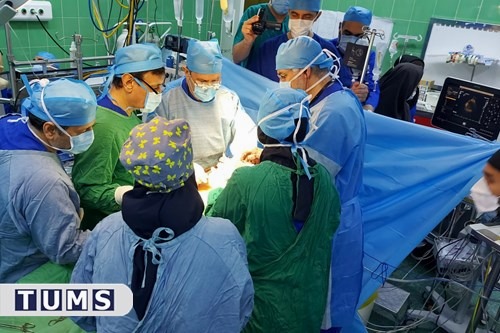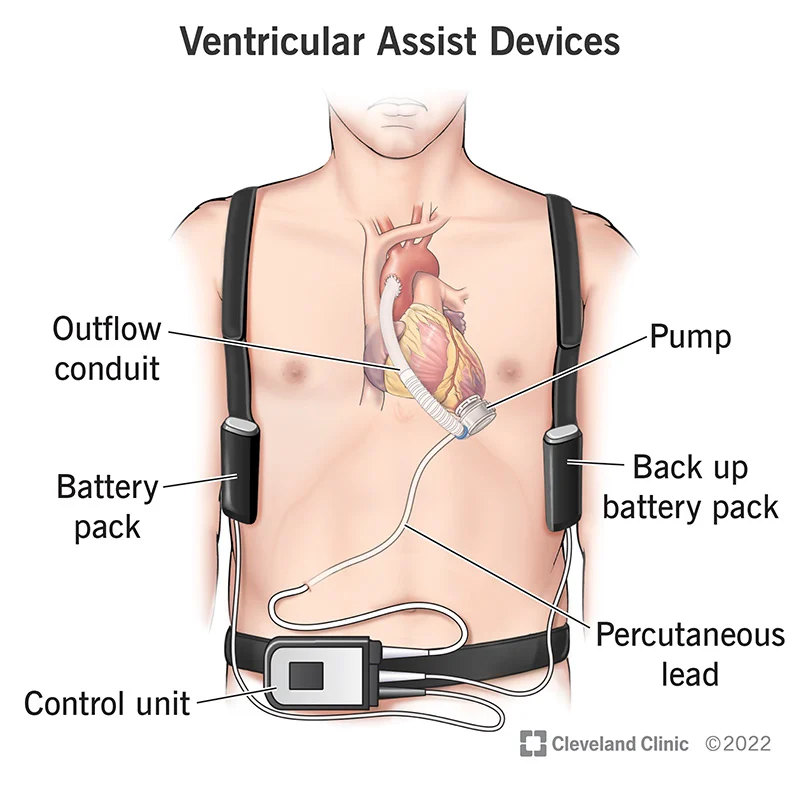For the first time LVAD (artificial heart implantation surgery) in Tehran heart centre

The first artificial heart operation for a patient with acute heart failure was successfully performed at Tehran Heart Centre. LVAD artificial heart will improve the patient's clinical condition by helping the left ventricle and heart.
What do you know about cardiac assist device (VAD) ?
Left ventricular assist device (LVAD) and right ventricular assist device (RVAD) are two main types, if both types are used simultaneously, it will be called bilateral ventricular assist device (BIVAD).
The left ventricular assist device is the most commonly used type that facilitates the pumping of blood in the aorta. The aorta is the largest artery that carries oxygen-rich blood from the heart to different parts of the body; But a right ventricular assist device is usually used for short-term right ventricular support after left ventricular assist device surgery or other heart surgery. An RVAD helps the right ventricle pump blood into the pulmonary artery, which carries blood from the heart to the lungs to get oxygen.
The bilateral ventricular assist device is used if the function of both ventricles is not sufficient to meet the needs of the body. Another method of treating this condition is a complete artificial heart, a device that replaces the ventricles.
Ventricular assist device has two main designs. The device in the skin design has a pump and power source that is placed outside the body; Tubes connect the pump to the heart through small holes in the abdomen. This type of device is suitable for short-term use or after surgery.
But in the ventricular assist device, the pump is placed inside the body and the power source is placed outside the body. A cable connects the pump to the power source through a small hole on the abdomen. This implanted device is mainly used for patients awaiting heart transplant surgery or as a long-term solution for patients who cannot undergo a heart transplant.

Reasons and cases of using the ventricular assist device Heart
failure due to heart diseases can be a good reason to use this device, because these diseases do not allow enough blood to be pumped in the body.
The ventricular assist device helps the heart in the following cases:
After surgery until the heart recovers
While waiting for heart transplant surgery
It is not possible to perform a heart transplant. This device improves heart function as a long-term solution.
Short-Term Ventricular Assist Devices
A ventricular assist device improves blood flow and heart function for a short time before, during, or after heart surgery until the heart has recovered. In addition, in case of severe complications such as heart failure, ventricular arrhythmias or cardiogenic shock, the doctor may suggest the short-term use of this device.
Long-term ventricular assist devices
The doctor recommends the use of this device in case of heart failure and before heart transplant surgery. If heart failure drugs are not effective, this device keeps the patient alive and improves his quality of life while waiting for a heart donation.
How to perform the surgery related to the ventricular assist device.
Ventricular assist device surgery usually takes 4 to 6 hours. This operation is similar to other open heart surgeries.
Before the surgery, the patient receives drugs to sleep and not to feel the slightest discomfort and pain during the operation. Vital signs, such as heart rate, blood pressure, oxygen levels, and breathing, are monitored during surgery.
The breathing tube is guided through the throat into the lungs and connected to the ventilation device that helps breathing.
The surgeon makes an incision in the chest and after cutting the breastbone, opens the chest to access the heart.
Sometimes, during surgery, the patient's heart is stopped using medicine, so that the surgeon can perform a better operation on the fixed heart. The heart-lung bypass machine circulates oxygen-rich blood throughout the body during surgery. A number of surgeries related to the left ventricular assist device are performed without stopping the heart and using a heart-lung bypass device. The heart-lung machine turns off after the ventricular assist device is connected, and the assist device starts working to improve blood flow and take over the pumping function of the heart.
According to the public relations report of Tehran University of Medical Sciences, Tehran Heart Centre, Dr. Hossein Naveed, deputy director of Tehran Heart Centre, said: "There have been significant advances in the treatment of cardiovascular diseases, which has led to an increase in the life expectancy of these patients."
He added: The standard treatment of acute myocardial infarction with primary PCI , various interventional measures, extensive surgeries and the installation of pacemaker and defibrillator devices are among the things that have improved the clinical condition and quality of life and increased the survival of this category of patients. But on the one hand, we are facing an increase in the number of heart patients undergoing treatment, and on the other hand, due to the ageing of the population, the incidence and prevalence of heart failure has increased, so that according to statistics, the most common cause of hospitalization in people over 65 years old is acute heart failure.
The vice president of Tehran Heart Centre continued: Unfortunately, treatment choices for patients with advanced heart failure are limited. Some of these patients become candidates for heart transplants in the investigations, but due to the lack of suitable heart donors, some of these patients die on the transplant waiting list. Some patients are not considered suitable candidates for transplantation due to specific clinical conditions. A special solution developed for this group of patients is the use of LVAD left ventricular assist devices. This device will help the patient's heart and improve his clinical condition.
Dr. Naveed added that for this, a very cohesive teamwork is needed between different groups of cardiovascular diseases, including heart failure fellowship, heart surgeon, cardiac anesthesia fellowship, experienced operating room and ICU staff.and there are many consultants, fortunately, with the very serious support of the respected head of the centre, this is possible in Tehran's heart centre.
Dr. Naveed also described the general condition of the patient very well, and at the end,appreciated the executive team of this unique operation, especially the professors of surgeon, anesthesia and heart insufficiency fellowships and echocardiography, as well as colleagues in the operating room, ICU, management and public relations of the centre.
Seyed Mehdi Fazeli
International Relations Expert


comment